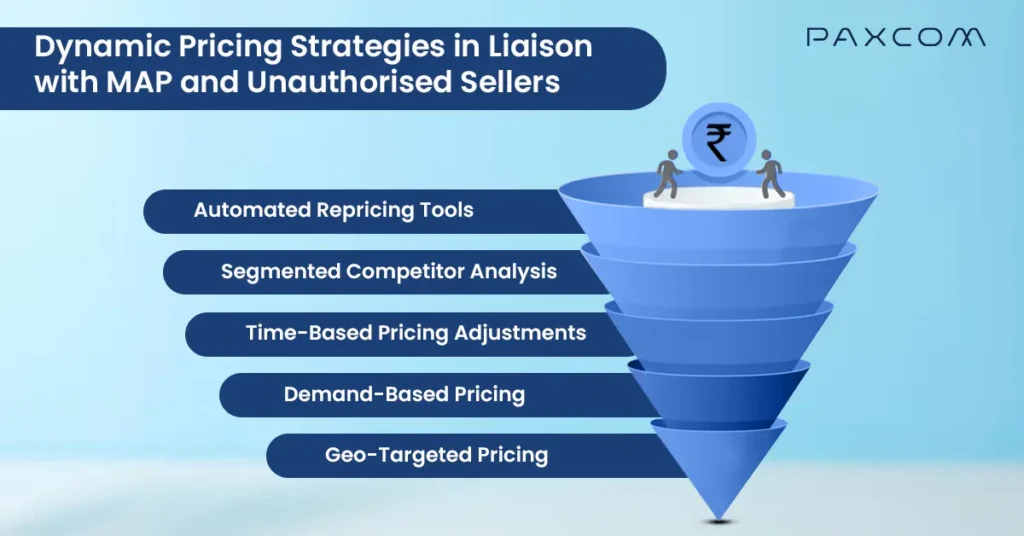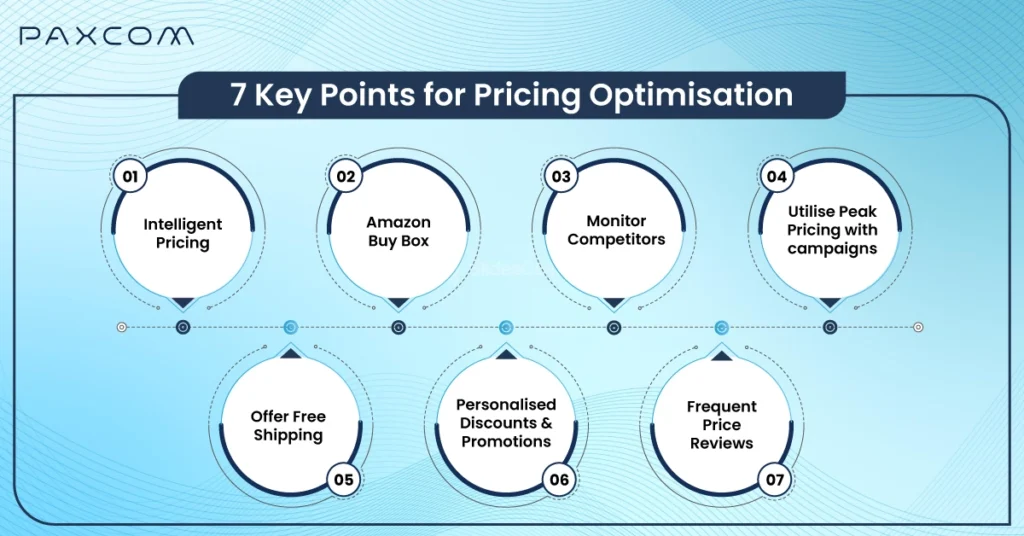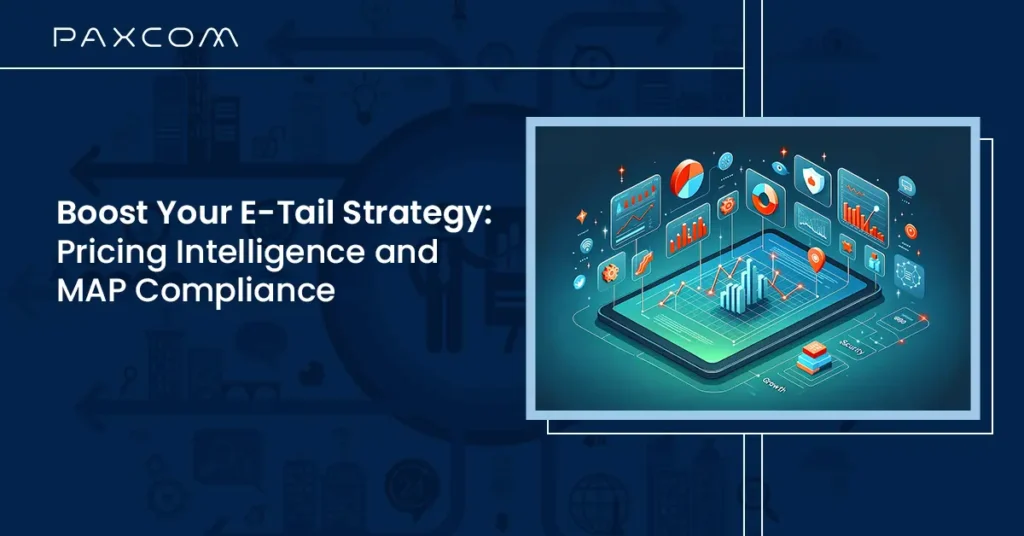Table of Contents
Introduction
Price remains the major sales agent driving a customer’s final purchase decision. According to a recent survey by Retail Dive in 2023, “72% of consumers rate price as the biggest reason to shop from where they do.” For Indian consumers, 37% prefer to purchase online, as products available online have better prices compared to offline ones.
In India, the MRP (Maximum Retail Price) includes all taxes, allowing retailers and e-tailers to sell at prices below the MRP. This flexibility leads brands to implement Minimum Advertised Pricing (MAP) policies, which are critical for maintaining brand reputation and standardising advertised prices.
The Importance of MAP Policies
Identifying and addressing MAP (Minimum Advertised Price) violations is crucial for online sellers for several reasons:
- Promoting Fair Competition: Ensures a level playing field across all sales channels, including online marketplaces. This prevents larger retailers from undercutting smaller sellers, fostering a fairer market environment.
- Preventing Underpricing: Protects against the risks of a race to the bottom in pricing. Excessively low prices can devalue products and harm the overall market perception of the brand.
- Maintaining Fair Margins: This secures profitable margins for all sellers, which is essential for the sustainability of their businesses. This helps online sellers maintain financial health and invest in growth.
- Protecting Brand Image: Preserves the brand’s reputation and perceived value by ensuring that products are not sold at prices that suggest lower quality. Consistent pricing supports a premium brand image.
- Creating Brand Value: Enhances consumer trust and loyalty through consistent and fair pricing. Customers are more likely to trust a brand that maintains consistent prices across different sellers and platforms.
- Reducing Price Wars:It minimises destructive price wars among online sellers. This helps maintain a healthier market environment where sellers compete on value and service rather than just price.
- Supporting Small Sellers: Helps protect smaller or niche sellers from being driven out of the market by larger competitors who can afford to undercut prices. This diversity benefits the entire marketplace.
Ensuring Consistent Customer Experience: By maintaining consistent pricing, customers receive a uniform experience regardless of where they shop, enhancing brand reliability and trust.
Implementing and adhering to MAP policies allows online sellers to maintain a balanced and sustainable market environment, benefiting both the sellers and the consumers.
Dynamic Pricing Strategies
The transparency of prices on the internet has led to the adoption of dynamic pricing strategies. These strategies take into account various factors such as consumer demand, traffic, weather, geography, time, consumer past trends, and competitor pricing.
Dynamic Pricing Strategies in Liaison with MAP and Unauthorised Sellers

- Automated Repricing Tools: Use tools to dynamically adjust prices based on competitor pricing while ensuring compliance with MAP policies.
- Segmented Competitor Analysis: Monitor and adjust prices based on authorised competitors, ignoring unauthorised sellers who violate MAP.
- Time-Based Pricing Adjustments: Implement pricing strategies that vary by time of day or week to align with peak shopping periods while maintaining MAP compliance.
- Demand-Based Pricing: Adjust prices based on real-time demand, ensuring that price drops do not violate MAP agreements.
- Geo-Targeted Pricing: Vary prices based on geographic locations, considering regional MAP policies and competitive landscapes.
Competitive Pricing Strategies in Liaison with MAP and Unauthorised Sellers

- Price Matching with Authorised Sellers: Match or slightly undercut prices of authorised sellers who comply with MAP policies to stay competitive without violating agreements.
- Exclusive Bundling Offers: Create product bundles that provide added value without directly lowering individual product prices, ensuring MAP compliance.
- Strategic Discounting: Offer limited-time promotions or loyalty discounts that do not publicly advertise below-MAP prices but provide competitive advantages.
- Enhanced Seller Ratings and Reviews: Focus on improving seller ratings and customer reviews to differentiate from unauthorised sellers, attracting customers despite price differences.
- Value-Added Services: Include free shipping, extended warranties, or exceptional customer service to justify MAP-compliant pricing and compete effectively.
7 Key Points for Pricing Optimisation

1. Price Intelligently
Pricing intelligence involves analysing competitors’ pricing strategies, monitoring product or service prices, and tracking price fluctuations over time. Consumers evaluate numerous factors when making a purchase on e-commerce platforms. Some prioritise the lowest price, while others seek quality at an affordable rate. Defining your market position clearly will help you portray yourself effectively.
- Lowest-Priced Seller: Compete by offering the lowest prices.
- Premium Quality: Emphasise quality and speed, even at higher prices
Utilise tools and software for real-time competitor analysis to stay updated with market trends and price movements.
2. Buy Box on Amazon
Monitoring the Buy Box price in the Amazon Seller Central Panel is crucial for competitive pricing and maximising sales. This visibility helps you adjust your prices to improve your chances of winning the Buy Box.
Regularly check the Buy Box price and set alerts for any changes to respond promptly and maintain competitiveness.
3. Monitor Competitors
Stay competitive by continuously monitoring your competitors. Using tools like Kinator, you can track the minimum and maximum prices offered by your competitors. Here are some tips:
- Repricing Tools: Utilise automated tools to stay ahead in the dynamic market.
- Segment Competitors: Analyse competitors based on criteria such as registration status, ratings, number of reviews, and dispatch times.
Implement competitor price tracking dashboards to visualise price trends and identify opportunities for price adjustments.
4. Peak Pricing
Utilise peak pricing when demand for a product is high and competition is low. This strategy can maximise your profits during high-demand periods.
Combine peak pricing with targeted marketing campaigns to drive more traffic and sales during high-demand periods.
5. Free Shipping
Offer free delivery at standard intervals to attract more customers. Many consumers prefer this over calculating the total price with additional shipping costs. Free shipping can be a significant deciding factor for many buyers.
Highlight free shipping offers in your marketing campaigns and product listings to attract more customers and increase conversion rates.
6. Discounting Model
Consumers love sales. Offering discounts can enhance your product’s visibility in search results and attract price-sensitive shoppers. Use limited-time promotions to create urgency and drive sales.
Utilise personalised discount strategies based on customer behaviour and purchase history to increase loyalty and repeat purchases.
7. Repricing Products
In the dynamic e-commerce space, timely repricing is essential. Automate this process with repricing tools that allow you to set specific criteria for adjusting prices. Decide whether to maintain profit margins or focus on sales volume, based on your business strategy.
Regularly review and adjust your repricing strategies based on market conditions, sales performance, and inventory levels to optimise profitability.
By refining these key points and adding value with additional information, you can enhance your pricing strategies and stay competitive in the dynamic e-commerce marketplace.














